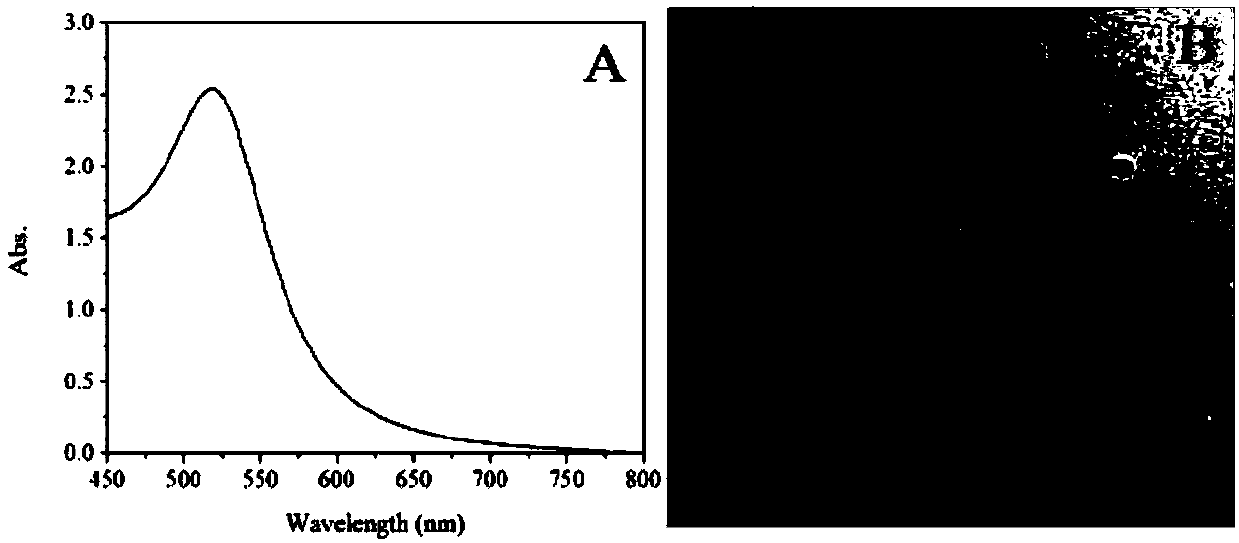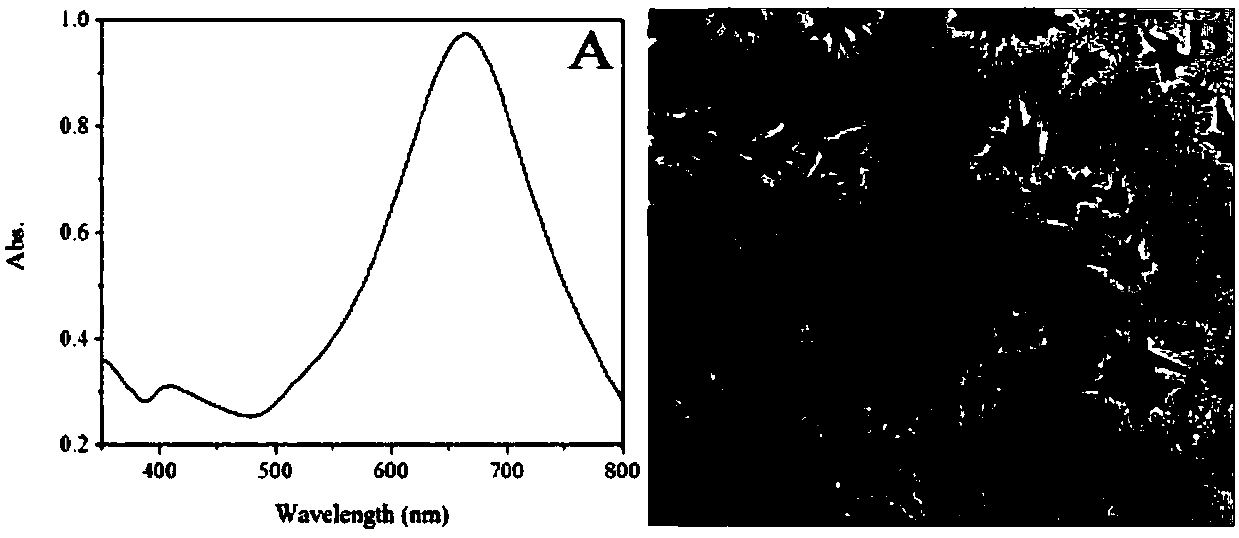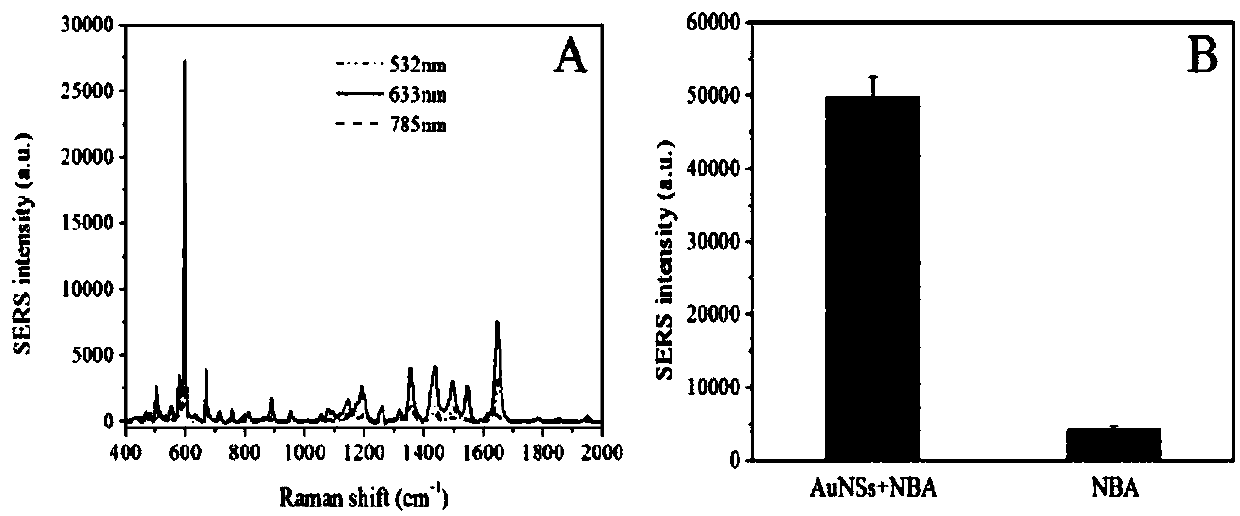Method for characterizing damage effect of toxin to living cells by SERS spectroscopy
A cell damage and living cell technology, applied in the fields of nanomaterials and life sciences, can solve the problem of inability to judge the degree of cell damage and apoptosis level, and achieve the effects of accurate and reliable results, simple and convenient preparation
- Summary
- Abstract
- Description
- Claims
- Application Information
AI Technical Summary
Problems solved by technology
Method used
Image
Examples
Embodiment 1
[0032] The synthesis route of gold seeds is as follows:
[0033] Weigh 0.2 g of trisodium citrate and dissolve it in 20 mL of ultrapure water to prepare a 1% trisodium citrate aqueous solution. 1 mL of 100 mM HAuCl 4 Add 99 mL of boiling ultrapure water. Then 15 mL of 1% trisodium citrate aqueous solution was added and vigorously stirred. After reacting for 10 minutes, the color of the gold sol turned wine red, and the reaction was terminated. The prepared gold seeds were cooled to room temperature at room temperature, and the ultraviolet-visible absorption spectrum ( figure 1 A) and TEM micrograph ( figure 1 B) Perform characterization and store at 4°C for future use.
Embodiment 2
[0035] The synthetic route of gold nanostars is as follows:
[0036] 50 μL of 100 mM HAuCl 4 The solution was added to 19.5 mL of ultrapure water that was constantly stirred, and then 200 μL of the gold seeds prepared above, 200 μL of a silver nitrate solution with a concentration of 3 mM, and 100 μL of an ascorbic acid solution with a concentration of 100 mM were added respectively, and the reaction was stirred at room temperature for 10 minutes until the color of the solution changed. It is blue-green. Finally, the reaction was terminated by centrifugation at 3000rpm for 15min, and the ultraviolet-visible absorption spectrum ( figure 2 A) and TEM micrograph ( figure 2 B) Perform characterization.
Embodiment 3
[0038] Detection of the SERS effect of gold nanostars:
[0039]Add 200 μL of NBA aqueous solution with a concentration of 0.5 mM to 20 mL of the prepared gold nanostar solution and incubate overnight in a shaker at 37 °C. Stop the reaction with centrifugation at a speed of 3000rpm for 15min, resuspend with ultrapure water, select respectively 532nm, 633nm and 785nm wavelength diode lasers as the excitation light source, detect the SERS spectrum of NBA, and obtain the best excitation wavelength as 633nm ( image 3 A). At the excitation wavelength of 633nm, the signal intensity of the SERS spectrum of NBA measured by gold nanostars is much greater than the Raman signal of NBA at the same concentration. at 592cm -1 The NBA characteristic peak intensity at is used to compare the enhancement effect of gold nanostars ( image 3 B).
PUM
 Login to View More
Login to View More Abstract
Description
Claims
Application Information
 Login to View More
Login to View More - R&D
- Intellectual Property
- Life Sciences
- Materials
- Tech Scout
- Unparalleled Data Quality
- Higher Quality Content
- 60% Fewer Hallucinations
Browse by: Latest US Patents, China's latest patents, Technical Efficacy Thesaurus, Application Domain, Technology Topic, Popular Technical Reports.
© 2025 PatSnap. All rights reserved.Legal|Privacy policy|Modern Slavery Act Transparency Statement|Sitemap|About US| Contact US: help@patsnap.com



